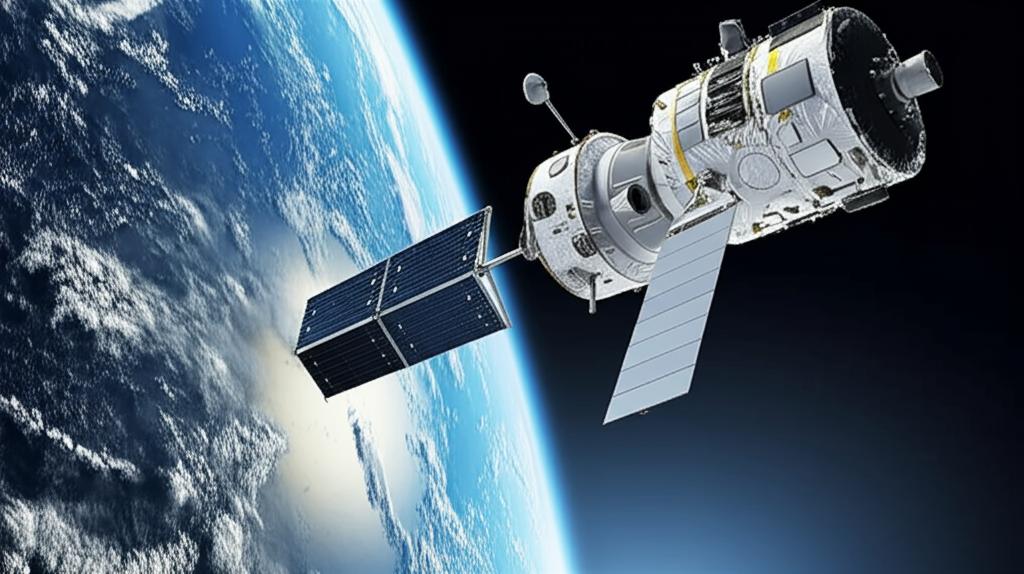The domain of satellite operations is undergoing a significant transformation, driven by rapid advancements in docking and on-orbit servicing (OOS) technologies. What was once the realm of science fiction – repairing, refueling, and upgrading satellites directly in space – is now becoming a practical reality, promising a future of more sustainable, resilient, and cost-effective space activities. The global market reflects this shift, with projections indicating substantial growth, potentially reaching over USD 11.5 billion by 2034.
Robotics Takes Center StageRobotics is the cornerstone of modern OOS. Highly sophisticated robotic arms are being developed and deployed for a variety of complex tasks. These systems are designed not just for simple grappling, but for intricate operations like repairing components, replacing parts (Orbital Replacement Units or ORUs), refueling spacecraft, conducting detailed inspections, and assembling larger structures in orbit. For instance, the U.S. Naval Research Laboratory (NRL) and DARPA have developed advanced robotic systems specifically for repairing and upgrading satellites, such as the Robotic Servicing of Geosynchronous Satellites (RSGS) payload, aiming to service high-value assets in geosynchronous orbit (GEO). Companies like PIAP Space are also contributing with developments like the TITAN robotic arm, designed to support tasks including deorbiting and servicing. These robotic systems often incorporate advanced sensors and AI for enhanced precision and autonomy.
Innovations in Rendezvous and DockingSafely and accurately connecting two spacecraft travelling at orbital speeds is a fundamental challenge. Current advancements focus on both hardware and software solutions for Autonomous Rendezvous and Docking (ARD).
- Docking Mechanisms: New systems are moving beyond traditional probe-and-drogue methods. Polish company PIAP Space, for example, has developed a versatile docking system featuring the LARIS Gripper, capable of capturing satellites via their Launch Adapter Ring, accommodating significant misalignments and working with both prepared and unprepared targets. Their system includes different architectures like 'Direct Docking' for compatible interfaces and 'Berthing' using their TITAN robotic arm for non-cooperative targets. Innovations like genderless mechanisms (e.g., CLING-ERS) offer increased versatility.
- Sensors and Control: Precision is key. Force and Torque Sensors (like PIAP Space's FORTIS) measure interaction forces during docking, enabling controlled, compliant connections and preventing damage. Advanced 3D Vision Systems use complex algorithms to identify a target's exact position and orientation without needing special markers, increasing adaptability.
- AI-Powered Autonomy: Artificial intelligence is revolutionizing ARD. Stanford University's Autonomous Rendezvous Transformer (ART) uses AI to rapidly calculate safe and optimal trajectories for docking maneuvers, reducing reliance on ground control and paving the way for truly autonomous operations. AI and machine learning are also crucial for managing complex multi-satellite interactions and optimizing servicing schedules.
Running out of fuel often dictates the end of a satellite's useful life, even if its components are still functional. In-orbit refueling aims to change this paradigm.
- Extending Missions: Refueling offers significant cost savings by extending the operational lifespan of expensive satellites, delaying or eliminating the need for costly replacements. This is particularly relevant for satellites in GEO.
- Enhanced Maneuverability: Refueled satellites gain increased flexibility to change orbits, avoid debris, or reposition for new mission objectives.
- Technological Advancements: Missions like China's Shijian-25 satellite (launched early 2025) are demonstrating refueling capabilities in GEO. Companies like Orbit Fab and Astroscale are collaborating on refueling missions targeting 2026. Northrop Grumman is developing standardized interfaces like the Passive Refueling Module (PRM) and dedicated tankers (GAS-T) under contract with the U.S. Space Systems Command (SSC), indicating a strong push towards operational refueling services. Challenges remain, particularly in developing standardized interfaces and servicing satellites not originally designed for refueling.
OOS technologies are also vital for tackling the growing problem of space debris. Active Debris Removal (ADR) involves capturing and deorbiting defunct satellites and large debris objects.
- Capture Methods: Various techniques are being tested and developed, including nets (tested by RemoveDEBRIS), harpoons (Airbus/RemoveDEBRIS), robotic arms/claws (ClearSpace-1 mission), and magnetic capture systems.
- Non-Contact Methods: Laser ablation, using ground-based or space-based lasers, aims to nudge smaller debris pieces into decaying orbits without physical contact.
- End-of-Life (EOL) Management: OOS enables better EOL strategies, such as controlled deorbiting where a servicing vehicle docks with a defunct satellite to guide it safely into the Earth's atmosphere to burn up, preventing it from becoming hazardous debris.
The future of space operations hinges on the successful integration of these advancing technologies. Robotics, AI-driven autonomous systems, sophisticated docking mechanisms, refueling capabilities, and debris removal techniques are converging to create a dynamic ecosystem for in-space servicing, assembly, and manufacturing (ISAM). This shift promises not only to extend the life and capabilities of individual satellites but also to enable entirely new mission architectures, such as the in-orbit assembly of large structures like space stations or telescopes, fostering a more sustainable and robust presence in space.

